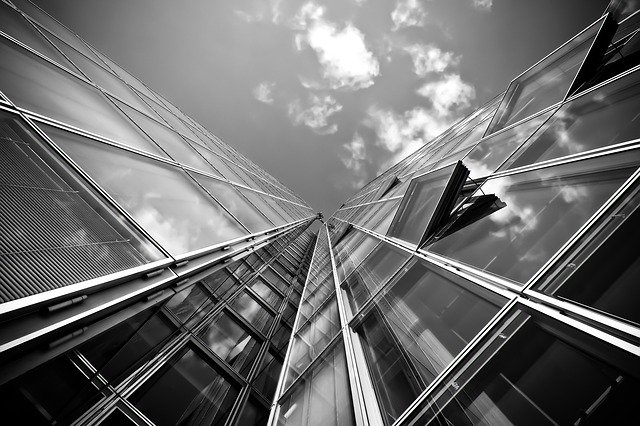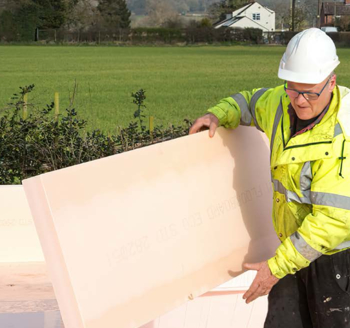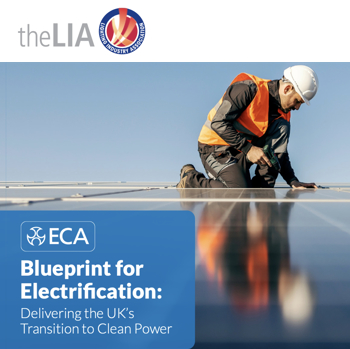Glazing
Contents |
[edit] Introduction
The term 'glazing' refers to the glass component of building's façade or internal surfaces. Historically, the installation of glazing was generally undertaken by a specialist glazier, but today it is possible to purchase an entire window which can be fitted by a general contractor. In older buildings, re-glazing can be done by specialist firms that restore rather than replace windows.
Whereas in the past windows were generally single glazed consisting of just a single layer of glass, today there are many different options for glazing. A substantial amount of heat is lost through the window, and so double glazed and triple glazed units have been developed as welled as secondary glazing to provide more insulation (as well as better acoustic performance) thereby improving the energy efficiency of a building and reducing carbon emissions.
For more information see: Double glazing and Triple glazing and Secondary glazing.
Glass can also be tinted to reject sunlight, coated in a translucent film to increase energy efficiency, or be self-cleaning. It is most common for glazing to be clear glass; however, there are also many varied forms of etched, textured, frosted, stained or tinted glass for privacy or aesthetic purposes. For more information, see Glass manifestation.
See also: Types of window.
[edit] Insulated glass unit (IGU)
An insulated glass unit (IGU) combines multiple glass panes into a single unit system, for example a window. Double glazed units are made of two sheets of glass with a cavity between them that is generally 4-20 mm which creates an insulating barrier. Triple glazed units have three sheets of glass. IGUs help combat heat loss, making a building warmer, quieter and cheaper to run.These are prefabricated panels fitted into a single planar system.
The sheets of glass are generally tempered (toughened) or laminated for safety. To keep the panes of glass apart, pane spacers are set around the inside edges. The more efficient windows use spacers that contain little-or-no metal, often known as 'warm edge' spacers.
The cavity between the panes can be a vacuum (the efficiency is dependent upon the quality of the sealing), or a heavy inert gas. This improves insulation and prevents condensation within the unit. Argon is the most commonly used gas, but Krypton or Xenon are more efficient and more expensive.
R-values are a measure of the thermal resistance of a material of a specific thickness, that is, its resistance to the transfer of heat across it. The higher the R-value of a material, the more effective it is as an insulator. Double-glazed units filled with air have an R-value of around R-2. Filling with Argon gas raises the value to R-3. Changing the glass to Low-E (see below), can raise the value to R-4. Triple glazed IGUs can have a value of R-5 or higher.
[edit] Types of glazing
There are many different types of glazing with different manufacturing processes, strength, energy efficiency, appearances and so on. The most common include:
[edit] Annealed glass
This is a piece of float glass that has been cooled in a slow and controlled manner. The internal stresses within the sheet of glass are reduced by this process making the resulting glass stronger and less likely to break than it would otherwise be. There can be safety concerns using annealed glass as it can break into large jagged shards.
[edit] Float glass
This is named after the modern process used to create large, thin, flat panels from molten glass which is floated onto a pool of molten metal such as tin. This process produces a very smooth sheet of glass with a highly consistent thickness.
[edit] Fully tempered glass
Tempering is the process by which annealed glass is heated in the same way as heat strengthened glass. The glass is cooled more rapidly which allows the internal portion of the glass to remain fluid for longer than the outer surfaces. This means that an equal amount of tensile and compressive stresses are formed across the glass which allows it to become in the order of four times as strong as annealed glass. This is used as a safety glass, as it shatters into small granular pieces rather than sharp shards, reducing the risk of injury.
For more information see: Tempered glass.
[edit] Heat soaked tempered glass
This is used as a means of testing glass panes that are to be used in safety critical situations, such as a glass railing. Tempered glass panes are heated to a temperature of around 550 degrees Fahrenheit for a few hours. This causes any unstable nickel sulfide inclusions (imperfections that may cause spontaneous breakage of the pane) to expand disproportionately to the glass, making the glass break.
For more information see: Tempered glass.
[edit] Heat-strengthened glass
This is made from a sheet of annealed glass reheated beyond its annealing point of around 1200 degrees Fahrenheit and then cooled slowly. Heat strengthened glass may be twice as strong as annealed glass, but may still need to be laminated for use in buildings.
[edit] Laminated glass
Laminated glass is used where glazing must remain intact if it is broken, either for safety or security reasons. It is made by fusing two or more layers of glass with inter-layers of polyvinyl butyral (PVB) through the use of heat and pressure. If it is made using heat strengthened glass, the pane will break into large pieces but will be held in the frame by the PVB inter-layer. If it is made from tempered glass, the sheet may fall out of the frame but will mostly stay together due to the inter-layer.
[edit] Low-emissivity (Low-E) glass
The term 'low-e glass' is used to describe glass that has a coating added to one or more of its surfaces to reduce its emissivity so that it reflects, rather than absorbs, long-wave infra-red radiation.
In cooler climates this means that long-wave infra-red radiation that builds up inside a building is reflected by the glass back into the space, rather than being absorbed by the glass and then partially re-radiated to the outside. This reduces heat loss and so the need for artificial heating.
In hotter climates, a low-e coating means that long-wave infra-red radiation outside the building is reflected back out of the building, rather than being absorbed by the glass and then partially re-radiated to the inside. This reduces the heat build-up inside the building and so the need for cooling. In hotter climates, a low-e coating might be used in conjunction with solar-control glass to reduce the amount of short-wave solar radiation entering the building.
The two main types of low-e coating are tin and silver. Tin oxide is applied to the glass at high temperatures to create a very hard and durable low-e coating. Silver coating must be enclosed within the glazing unit so that oxidation doesn't cause the degradation of the silver over time.
[edit] Patent glazing
The term ‘patent glazing’ refers to a non-load bearing, two-edge support cladding system. Its name relates to the number of patents that were taken out in the 19th and 20th centuries for different versions of the system.
For more information see: Patent glazing.
[edit] Safety glass
The term safety glass refers to a range of glass types that have been strengthened or reinforced to make them less susceptible to breakage or shattering and to make them safer when they are broken. Safety glass should not splinter into large shards when broken. For more information see: Safety glass.
[edit] Security glass
Security glass provides resistance to forced entry and manual attack. For more information see: Security glazing.
[edit] Self-cleaning glass
A transparent coating can be applied to glass during the manufacturing which reacts with the sun's UV rays to break down dirt and grime which forms on the outside of the windows, and when it rains, the decomposed dirt natural rinses away. The coating has hydrophilic properties which mean it attracts water over its entire surface, avoiding unsightly uneven water marks.
[edit] Stained glass
Stained glass is a type of glazing material that is coloured (stained), either by the addition of metallic salts during the manufacturing process, or by having colour applied to its surface and then being fired in a kiln to fuse the colour to the glass.
For more information see: Stained glass.
[edit] Wired glass
This is most often used as a fire resistant glass because the wire holds the glass in place if high temperature causes it to break. The wire mesh is better at holding glass in place than the PVB films used in laminated glass.
[edit] Window Energy Ratings
The Window Energy Ratings (WER) is a scale developed by the British Fenestration Ratings Council (BFRC) to measure the thermal performance of windows. The BFRC label indicates the rating of the window on a scale running from A+ (the most energy efficient) to G (the least efficient).
The overall performance is dependent on the combined efficiency of the frame, the glazing and the air tightness of the finished windows. Low-e windows generally get the highest performing energy ratings. Professional installers should be registered with a Competent Person Scheme or register the installation through Local Authority Building Control. English and Welsh competent person schemes are:
- Fenestration Self-Assessment Scheme (FENSA): They guarantee that its installers and frames comply with building regulations.
- British Standards Institution (BSI).
- Certass Glazing Scheme: They also register and approve installers.
[edit] Building regulations
Under the building regulations in England and Wales, new and replacement windows must meet certain energy efficiency requirements, as well as other requirements relating to safety, means of escape and ventilation.
Approved Document L classifies an external window as a 'controlled fitting', which refers to the whole unit including the frame. New and replacement windows in existing homes in England, Wales and Scotland must be at least WER band C or have a U-value of 1.6. However, the regulations state that:
'Replacing the glazing whilst retaining an existing frame is not providing a controlled fitting, and so such work is not notifiable and does not have to meet the Part L standards, although where practical it would be sensible to do so.'
Part K of the Building Regulations require that where 'building work' is carried out in a critical location involving glass, that safety glazing is used. Safety glazing is required:
- In any glazed area within a window below 800 mm from floor level.
- In any glazed area within a window that is 300 mm or less from a door and up to 1500 mm from floor level.
- Within any glazed door up to 1500 mm from floor level.
[edit] Related articles on Designing Buildings
- Angular selective shading systems.
- BFRC window rating scheme.
- Birds and building collisions.
- BREEAM Visual comfort Daylighting.
- BREEAM Visual comfort View out.
- Conservation rooflights.
- Curved glass.
- Daylit space.
- Domestic windows.
- Double glazing.
- Double glazing v triple glazing.
- Glass.
- Glass block flooring.
- Glass manifestation.
- Glass mullion system.
- Glazier.
- Large rooflights.
- Low-E glass.
- Patent glazing.
- Rose window.
- R-value.
- Rights to light.
- Secondary glazing.
- Security glazing.
- Stained glass.
- Structural glass assembly.
- Suction lifter.
- Tempered glass.
- Tin.
- Triple glazing.
- Types of window.
- Window.
- Window frame.
[edit] External references
Featured articles and news
Building Safety Regulator reforms
New roles, new staff and a new fast track service pave the way for a single construction regulator.
Cooling centres and cool spaces
Managing extreme heat in cities by directing the public to places for heat stress relief and water sources.
Winter gardens: A brief history and warm variations
Extending the season with glass in different forms and terms.
Restoring Great Yarmouth's Winter Gardens
Transforming one of the least sustainable constructions imaginable.
Construction Skills Mission Board launch sector drive
Newly formed government and industry collaboration set strategy for recruiting an additional 100,000 construction workers a year.
New Architects Code comes into effect in September 2025
ARB Architects Code of Conduct and Practice available with ongoing consultation regarding guidance.
Welsh Skills Body (Medr) launches ambitious plan
The new skills body brings together funding and regulation of tertiary education and research for the devolved nation.
Paul Gandy FCIOB announced as next CIOB President
Former Tilbury Douglas CEO takes helm.
UK Infrastructure: A 10 Year Strategy. In brief with reactions
With the National Infrastructure and Service Transformation Authority (NISTA).
Ebenezer Howard: inventor of the garden city. Book review.
The Grenfell Tower fire, eight years on
A time to pause and reflect as Dubai tower block fire reported just before anniversary.
Airtightness Topic Guide BSRIA TG 27/2025
Explaining the basics of airtightness, what it is, why it's important, when it's required and how it's carried out.
Construction contract awards hit lowest point of 2025
Plummeting for second consecutive month, intensifying concerns for housing and infrastructure goals.
Understanding Mental Health in the Built Environment 2025
Examining the state of mental health in construction, shedding light on levels of stress, anxiety and depression.
The benefits of engaging with insulation manufacturers
When considering ground floor constructions.
Lighting Industry endorses Blueprint for Electrification
The Lighting Industry Association fully supports the ECA Blueprint as a timely, urgent call to action.






















